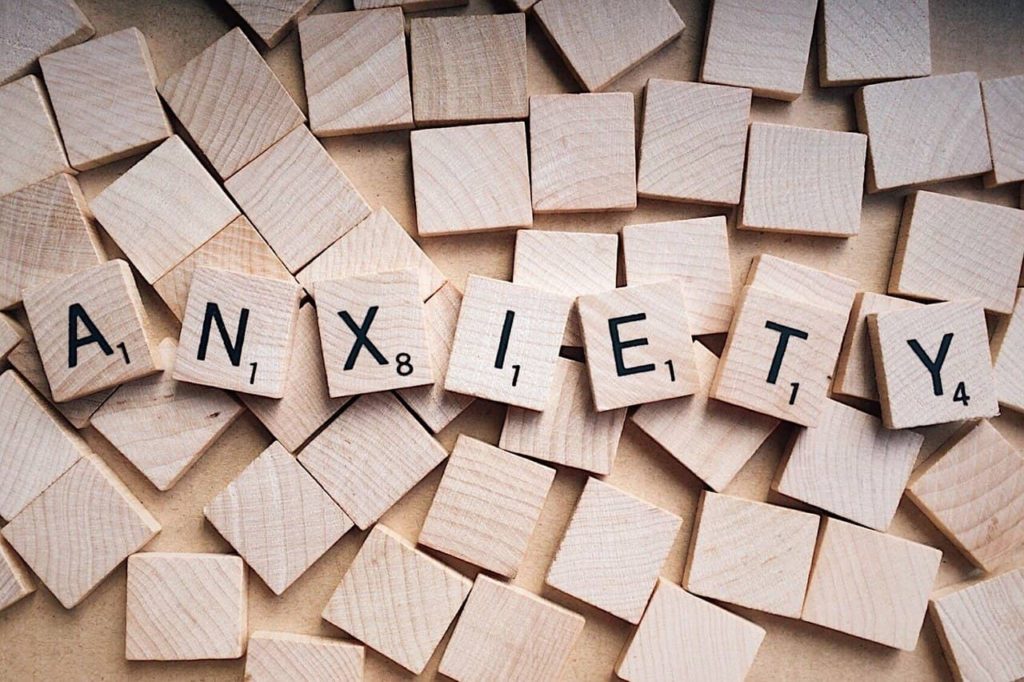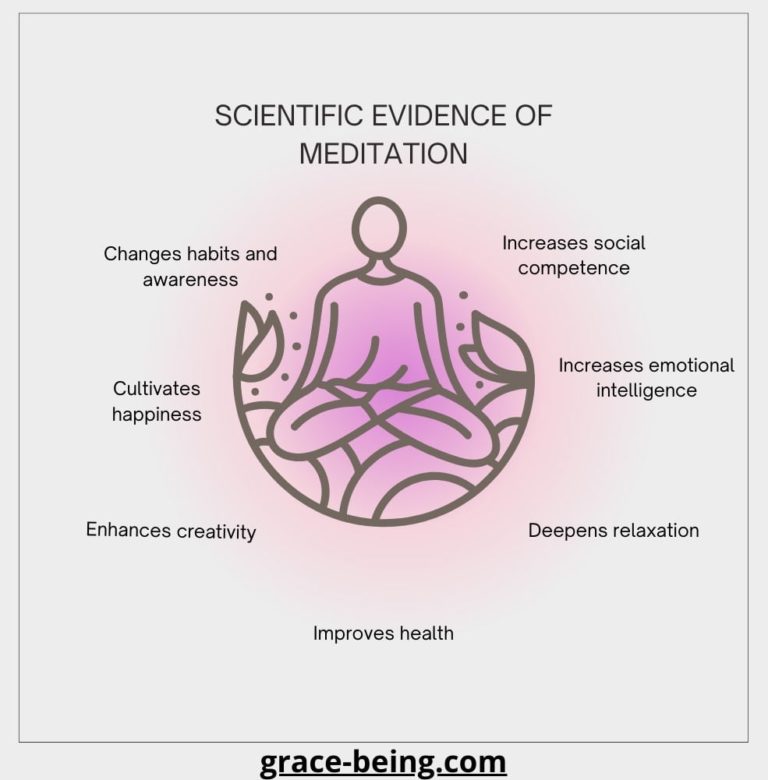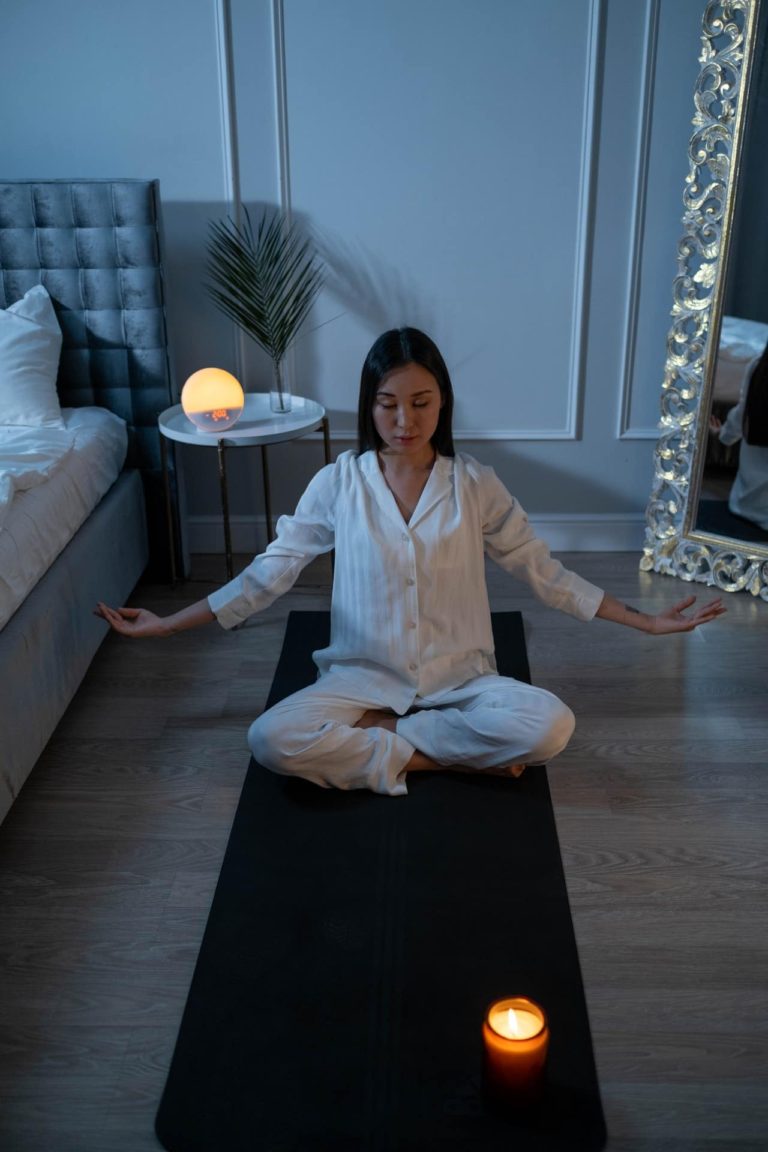Using Meditation To Deal with Anxiety and Negative Thoughts
How to manage anxiety and negative thoughts with meditation
We all know what it feels like to be anxious at some point or another in our lives. For some people it might be a rare occasion, but for many others, it’s a thing they have to deal with on a daily basis. Living with anxiety is not an easy task, depending on the severity of the anxiety and its symptoms. If you constantly feel nervous, worried or restless you’re probably suffering from anxiety.
Generally speaking, being anxious is our body’s way of saying that it’s experiencing an overwhelming amount of stress. The problem arises when anxiety takes over and dominates our actions and mental state. When we engage in compulsive negative thinking and create scenarios in our head, we torment ourselves with negative thoughts, and cultivate anxiety about a situation which hasn’t really happened or has already passed.
Many people constantly worry and dwell about things which happened in the past, or experience unnecessary psychological fear about speculative events. This kind of anxiety can be unpredictable and overwhelming, and it takes up a lot of our mental space and energy. If left untreated, anxiety can have a negative impact on our career, relationships and social life.
Meditation has been proven by scientists as a good technique to manage anxiety by reducing stress and negative thoughts. Most of the psychological fear we experience is about the past or the future, and that’s one of the reasons why meditation is so effective. With meditation practice we become more mindful of the present moment and shift our awareness to the present moment.
The term “meditate” originated from the Latin word meditatum, which means, “to ponder.” This technique is an ancient practice that originated thousands of years ago in India. Meditation practice quickly moved to neighboring countries in Asia, and we are seeing it arise in the Western world. Even though it is well known within Buddhist communities, meditation is a practice found in several other Religions.
There are different types of meditation practices, but in this article I would like to focus on meditation for anxiety which comes in several forms like social anxiety, performance anxiety, anger anxiety and OCD anxiety by compulsive negative thoughts. However, let’s have a look at what meditation practice is exactly.

What is Meditation?
During meditation, you focus your attention on your breath, different body parts, or a mantra, it depends which kind of meditation form you choose. Naturally, you will notice that your mind will drift away into a stream of thoughts and internal dialogue. So you find yourself thinking about what you need to do next, the sandwich you ate that morning, or you just end up talking to yourself and doubting your ability to meditate.
Don’t be discouraged, this is part of the meditation practice. Each time you notice yourself drifting away in thoughts, you bring your focus back to your breath or mantra. Patience, self-compassion, and dedication is what differentiates between people who continue to practice meditation, and those who give up on it.
Getting distracted is completely natural as that’s what our brain does, constantly interpreting and generating information. Every time you bring your awareness back to your breath, you are strengthening your concentration skills, enhancing your self-awareness and disciplining your mind to think consciously.
Most people who suffer from anxiety do not realize that they compulsively engage in negative thinking. They operate as if they were on auto-pilot carried away with negative thoughts which trigger anxiety related issues like social anxiety and performance anxiety.
Focusing on your breath or mantra during meditation, allows you to become aware of your thought patterns and creates space between you and your thoughts. This way it becomes easier to detach from your thoughts, rather than completely identifying with them. That’s why meditation makes it easier to manage your emotions and anxiety triggered by negative thoughts. By practice, you learn how to let go of unnecessary fears and anxiety, and become empowered to operate from a place of strength rather than fear.
By repeating this process, you can benefit from enhanced physical and emotional well-being. There are several types of meditation techniques which you could try for your anxiety, and many people have tried it out and claim that meditation has changed their life.

How Mindful Meditation Calms Anxiety and Negative Thoughts
The practice of meditation is also a way to become more mindful of your thoughts, feelings and surroundings. You teach yourself to stay with difficult emotions without suppressing them and without judgement. By observing your thoughts, you become more mindful of them, instead of feeding your thoughts.
Allowing yourself to feel your emotions and acknowledging your worries along with other negative thoughts, often helps them to become lighter. Becoming aware of negative self-talk allows you to change your negative thinking pattern to a positive one but this usually is combined with cognitive behavioural therapy (CBT).
Mindfulness meditation allows you to explore the underlying causes of your stress and anxiety. As you shed light on these dark shadows in your subconscious mind, the darkness diminishes as you become conscious of them. It can lead to spiritual awakening, an experience that changes your entire life.
You will also find it easier to think of new solutions and think outside the box when facing a challenging situation, as you expand your consciousness and enhance creativity. From a place of stillness you can access inner wisdom that comes spontaneously and empowers you to move forward in challenging situations and everyday life.
The more you practice mindfulness meditation, it helps you create space around your negative thoughts so they don’t consume you. You become more aware of how you act, and you find it easier to catch yourself being impulsive and making conscious decisions. If you’d like to learn some powerful mindfulness tools and exercises, check out these useful tips listed by the Great Updraft.

Types of Meditation for Anxiety
There are different types of meditation which you can try if you suffer from anxiety. You can experiment between the types which you think you would like and see how it goes from there. Personally, I like to switch between different types of meditation. I go with the flow and see what would be the most beneficial depending on how I’m feeling.
Most importantly is that you show up every day and make it a daily habit. Eventually, meditation becomes a daily space for you to retreat within yourself, to feel inner peace, ground yourself, and nourish your soul. The same as you nourish your body with food and water.
-Guided meditation – This method of meditation involves mental images, therefore visualizations of places or situations which you find calming. You can also find audio guided meditation for anxiety to guide you through the healing power of letting go of fear and anxiety. Learn more about the difference between Hypnosis VS Meditation.
–Mindfulness meditation – Focuses on increased awareness and acceptance of living in the present moment. It helps you to let go of fear and embark on the path of least resistance. It helps you perceive situations from a place of observation rather than a place of fear and judgement. Focus your attention on the flow of your breath. Observe your thoughts and emotions, and let them go without judgment.
–Tai chi – This is a form of calm Chinese martial arts. In tai chi, you perform a series of postures or movements in a slow, graceful manner while practicing deep breathing. This allows you to connect and align with the flow of life.
–Transcendental Meditation (Mantra) – A simple and natural technique where you silently repeat a personally assigned mantra. It could be a word or a phrase you decide to focus on, instead of distracting thoughts. With this meditation technique, you allow your body to settle into a state of relaxation, and your mind to achieve a state of inner peace.
–Yoga – This is also a form of meditation. You perform a series of postures and controlled breathing exercises which require focus and discipline to master. These exercises promote a flexible body and a calm mind. As you move through poses that require balance and concentration, you quiet your mind by focusing on the postures rather than on your busy hectic day.

Easy Everyday Ways to Practice Meditation
It’s important to be self-compassionate when it comes to meditation as many people get discouraged because it feels uncomfortable, or they feel like they can’t do it. Everyone can meditate, it just requires some discipline and commitment just like any other skill.
Initially, it would be easier if you follow guided meditations or group classes led by trained instructors. There are also several apps which you can download on your device. As you become more accustomed to practice, you can easily practice meditation on your own.
If you feel like you don’t have the time for it, here are some ways how you can introduce meditation in your daily routine :
–Focus your attention on your breathing – Sit down in a quiet space and focus on your inward and outward breathing. Take 3 deep slow breaths, and return to your natural breathing rhythm. Just observe and when your attention wanders, calmly return your focus to your breath flow.
–Body Scan – Sit down comfortably and focus your attention on different parts of your body. Start from the head and go downwards from right to left. Become aware of your body’s various sensations, whether that’s pain, tension, warmth or relaxation.
–Walk in nature – Walking in nature by yourself in peace and quiet is an efficient and healthy way to relax.
–Mindfulness Walking – You can practice this method anywhere you are, even at a shopping mall. Pay attention to your surroundings, engage your senses and focus on the sounds, colours and visuals. Don’t focus on a particular destination, walk mindfully as you become fully present wherever you are.
–Practice gratitude – Being grateful cultivates positive emotions and when combined with meditation, it’s even more powerful. Focus your attention on things or people you are grateful for. This will cultivate feelings of love, compassion and embracement into your thoughts, leaving your feeling more calm and positive.

Building Your Meditation Skills
Just like any other skill, meditation takes practice, so don’t add to your stress by demotivating yourself from meditating.
Everyone is different, try out different types of meditations so you find out what types of meditation you enjoy doing. Check in with yourself to see what your needs are and adapt meditation to what you’re feeling. Committing to this practice is a natural way to help you reduce your stress, anxiety and improve your emotional, mental and physical well-being.
Moreover, it’s a practice that nourishes your spiritual well-being. Meditation is known as the path to salvation of morality, contemplative concentration, inner knowledge, and liberation of the mind. With the practice of meditation you can unfold the veil as you become aware of your ego and wake up to the ultimate reality.
How helpful was this page?
Click on a star to rate it!
Average rating 4.6 / 5. Vote count: 169
No votes so far! Be the first to rate this post.
We are sorry that this post was not useful for you!
Let us improve this post!
Tell us how we can improve this post?
Grace Being
Search
Recent Posts
Categories






